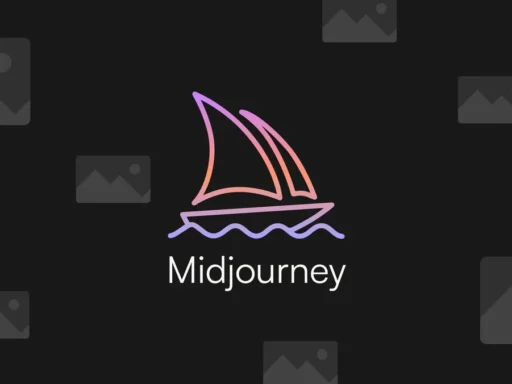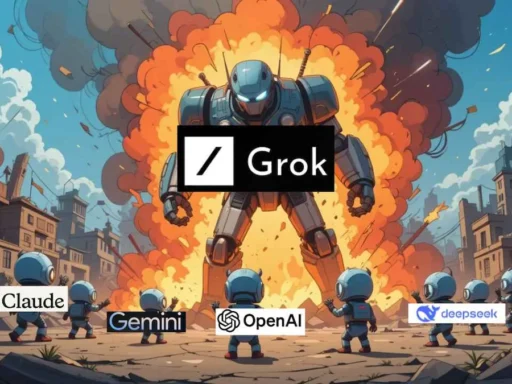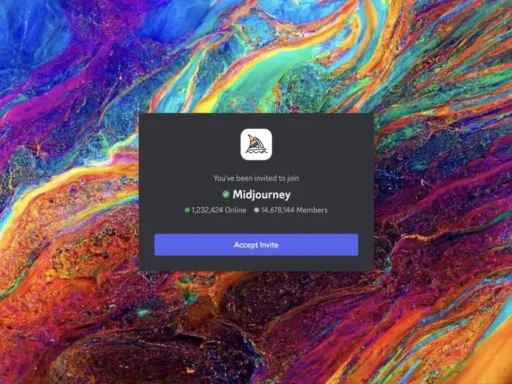Saving the Flapper Skate How Technology Plays a Big Role
How do you protect an animal you can’t see most of the time?
That’s the exact problem Scottish conservationists faced with the flapper skate—a massive, prehistoric-looking fish that prefers the murky depths off the Scottish coast. It’s elusive, critically endangered, and until recently, almost impossible to track effectively.
But here’s where AI steps in. We’re not talking generic algorithms or vague “innovation” buzzwords. We’re talking machine vision, real-time mapping, and cold, unblinking scanning power finally targeted at a species that’s been quietly disappearing.
This isn’t about future tech. It’s happening right now. AI applications that used to be reserved for Silicon Valley ad optimization are now repurposed to conserve biodiversity. Underwater drones scan for signs of flapper skate activity. Pattern-recognition engines process hours of dive footage in minutes.
And deep in the trenches? It’s not just scientists. Local fishermen, government marine units, and startups are getting their hands dirty with tech that could either save a species… or be too little, too late.
That’s the story we’re diving into. No fluff. Just tech, data, biology—and the blunt truth about how AI might be one of the best shots left for one of Scotland’s weirdest, most vulnerable animals.
Introduction To AI’s Pivotal Role In Wildlife Conservation
AI isn’t just for big data analytics or self-driving cars anymore. It’s boots-on-the-ground, or… sensors-in-the-seabed tech now.
We’re seeing AI intersect with ecosystem preservation in ways that felt like science fiction five years ago. Cameras powered by neural networks are quietly revolutionizing how researchers monitor reef health. Data-crunching systems are predicting rhino poaching hotspots before a single fence is cut.
And over in Scottish waters, that same wave of innovation is converging with an urgent reality: the flapper skate.
This isn’t some side character in marine ecology. It’s one of the largest skate species on the planet, with wingspans that can stretch past the width of a king-size bed. More than that, flapper skates are biological indicators, meaning their well-being signals the health of entire ecosystems. When the flapper skate declines, it’s not alone.
The problem? They’re invisible for most of their lives. These fish nest in deep troughs, barely moving and nearly undetectable through traditional monitoring systems. But environmental pressures—climate change, habitat loss, illegal trawling—don’t wait for manual methods to catch up.
That’s where AI becomes essential. It’s not a bonus or a luxury—it’s a lifeline.
Between sea temperatures spiking and biodiversity metrics nosediving, there’s no time for incremental change. AI-driven conservation isn’t just helpful—it’s overdue.
The Flapper Skate: A Scottish Conservation Priority
The flapper skate is critically endangered, and here’s why that matters.
This species isn’t just locally rare—it’s globally threatened. Once widespread across the North Atlantic, the flapper skate population has plummeted due to reckless fishing practices, seabed trawling, and the silent creep of ocean warming.
Overfishing is the bullet, but climate change pulls the trigger.
When trawlers drag massive nets across Scotland’s marine floor, they unknowingly trash flapper skate nesting grounds. Those eggs, laid in shallow troughs, can take over 18 months to hatch. If disturbed, they don’t survive. And conservationists? They can’t stop what they can’t see.
Here’s how the current approach breaks down:
- Too few surveys
- Expensive manual dives
- Infrequent monitoring windows, often months apart
It’s like trying to track an endangered bird with a broken compass and yesterday’s weather report.
Take the Loch Sunart to the Sound of Jura Marine Protected Area as one prime example. It’s designated safe territory for the flapper skate, but without timely updates, policymakers can’t enforce boundaries or react fast to new threats.
That’s where AI slices through the noise.
Deep-learning algorithms process thousands of frames from underwater cameras in hours instead of weeks. These systems identify not just flapper skates, but their actions—mating, nesting, feeding.
Also, it scales containment decisions. If a hotspot is found via AI analysis, protections can be invoked faster with real science backing the call. Scottish Natural Heritage teams are already starting to adapt preemptive regulations based on AI-supplied behavioral models.
And no, it’s not perfect. But it’s miles ahead of guesswork.
| Threat | Old Method | AI-Enabled Solution |
|---|---|---|
| Nesting Ground Detection | Manual diver surveys (weeks) | Real-time image recognition |
| Population Monitoring | Seasonal reports | Continuous automated tracking |
| Illegal Trawling Alerts | Post-event logging | Instant pattern detection & alerts |
So here’s the shift: conservation isn’t about reacting anymore.
AI tools are helping us predict, detect, and protect—before the flapper skate’s story becomes just another cautionary headline.
How AI Scanning Revolutionizes Conservation Efforts
If conservation was a game of hide and seek, the flapper skate would be an undefeated champion.
But with AI scanning? The rules just changed.
Teams working across the Scottish coast are deploying smart underwater cameras trained on machine learning models. These tools don’t get bored. They don’t blink. And they definitely don’t miss the subtle movement of a flapper skate gliding across the seafloor.
The core tech includes:
- AI-based image recognition tuned to detect flapper skate silhouettes and motion
- Data pipelines that collate findings into real-time heat maps
- Machine learning models trained on historical nest sites to predict potential new zones
What used to take a month of boat time and diver hours now happens in a few clicks. Plus, it’s safer—both for humans and for the marine environment.
A great example of this is the partnership between OceanMind and Scotland’s Marine Directorate. Their pilot programs used neural networks to scan archived dive footage. The result? A 47% increase in nest detections versus traditional analog assessment methods.
And startups are stepping in heavy. Companies like NatureMetrics and ArchiFish use AI tech to link sonar data, underwater acoustics, and optical feeds—to paint a far clearer picture of what’s happening below the surface.
AI doesn’t just make it faster. It makes it possible.
Tracking a flapper skate’s migration across months and miles would’ve been fantasy a decade ago. Today, we’ve got pattern prediction layered into mobile dashboards used by real-world marine biologists.
Fewer missed nests. Faster protections. Less guesswork.
Behind the Scenes: The Role of AI Tools and Market Innovations
Beneath the surface of sleek conservation headlines and drone-shot wildlife footage, there’s an invisible tech force building momentum. For every endangered flapper skate or rewilding pledge, there’s a neural network poring through ocean acoustics or a startup pitching AI that can “speak penguin.” What’s really powering this new age of environmental watchfulness? It’s not just biologists with clipboards. It’s silicone chips and servers tuned to hear, see, and predict what human eyes miss.
AI development is quietly revolutionizing how we peek into Scotland’s marine ecosystems. One game-changer? Underwater imaging, once grainy and limited by poor visibility, is getting an intelligent boost. Machine learning tools now detect elusive species like the flapper skate with surprising accuracy. These AI models can identify complex movement patterns across thousands of hours of underwater footage, speeding up what used to take human eyes weeks to analyze.
The tech goes deeper. In the waters off the Scottish coast, autonomous underwater vehicles (AUVs) equipped with AI-powered sensors and sonar are being deployed to track climate-induced habitat change. Combined with drones that scan above sea level and acoustic devices that capture subaquatic vibrations, researchers can now understand marine ecosystems in high-resolution, round-the-clock layers.
Parallel to the fieldwork, a new wave of startups is making waves in conservation. Companies like WildMe, Conservation X Labs, and EarthRanger aren’t just engineering software—they’re crafting full-scale ecosystems of AI tools built specifically for biodiversity monitoring. These niche innovators are attracting investment not just from eco-conscious venture funds but from traditional tech giants seeking green credibility. Unlike general-use AI models, these startups build small, purpose-built applications trained on ecological data.
That niche focus is paying off. Recent market reports show a steady rise in fundraising rounds tied explicitly to AI-biodiversity convergence. Investors now see environmental AI not as charity, but as an emergent space with measurable climate ROI.
And the academic sector hasn’t sat still either. Across Scotland, new partnerships are quietly forming between universities like Edinburgh and Glasgow and tech firms focused on environmental modeling. In collaboration with organizations like Marine Conservation Society Scotland, predictive tools are being crafted to forecast shifts in marine biodiversity due to temperature gradients and fishing patterns—long before any physical change is visible.
While these innovations are still taking root, their alignment with government conservation goals is notable. From dynamic marine protected area planning to flapper skate spawning zone prediction models, these projects mirror the Scottish government’s pledge for scientific solutions driving conservation.
The takeaway? AI isn’t just another lens pointed at the wild. It’s becoming the system running behind the scenes, the quiet partner that doesn’t sleep, and doesn’t blink when watching for the subtle signs our planet’s breaking points.
The Impact of AI on Conservation Outcomes
Scotland’s conservation toolkit looks a lot sharper and smarter than it did even five years ago. What changed? AI stepped in—not as an all-knowing savior, but as a tireless research partner refining decisions that used to lean heavily on guesswork and grainy maps.
Before machine learning stepped on deck, estimating flapper skate numbers in Scottish waters involved lucky sightings, acoustic surveys, and lots of guesswork. Now, with AI-enhanced imaging, detection accuracy has jumped dramatically. That means fishery protections and conservation zones aren’t just “educated guesses”—they’re grounded in real-time species mapping pulled from satellite data, drone flyovers, and neural networks trained on hours of seabed footage.
The result? Scotland’s marine caretakers report significant progress in identifying critical habitat zones faster and more accurately. Programs using predictive AI models have allowed for advanced warning systems when ecosystems show early signs of stress. That lets policy shifts—like fishing limits or marine zone restrictions—kick in faster, with measurable ecological benefits.
And this isn’t just a Scotland story. Reinforced by global case studies, AI is increasingly acting as a keystone tool in endangered species protection worldwide.
- In Gabon, AI-powered camera traps track forest elephants by identifying individuals based on tusk shape and walking gait.
- In India, machine vision tools are detecting poachers with infrared sensors and triggering real-time alerts in tiger reserves.
- Across the Amazon, drones with image classification AI track illegal logging before forest rangers receive tip-offs.
That kind of reach means the same algorithm spotting flapper skate off Shetland may one day adapt to detect deforestation patterns in Cameroon or coral bleaching in the Maldives.
But behind the inspiring metrics lies a set of growing challenges. AI isn’t immune to bias. Training sets may over-represent clear-water habitats, leading to under-detection in murky or data-sparse zones. And while Scottish tech partnerships often emphasize open-source architecture, many conservation AI tools baked by billion-dollar brands are black boxes. They don’t disclose how their models work, what data trained them, or who audits the outputs.
Transparency gaps like these matter when conservation policy is shaped by tools that governments can’t audit and communities can’t access. If AI is to become a true force for ecological justice, it can’t remain the intellectual property of tech monopolies. It must be open, auditable, and locally adaptable.
Every AI-enhanced conservation signal still needs the signal boost of human ethics, public scrutiny, and on-the-ground inspection. Without that? It’s just digital guesswork with a nature-themed interface.
The Future of AI in Biodiversity Conservation
Environmental AI isn’t a one-off trend—it’s morphing into its own sector. Eco-focused startups are popping up everywhere from Edinburgh to Nairobi, with funding increasingly directed toward models that serve not just revenue but regeneration.
Forecasts suggest the next decade will see deeper integration between AI and government-run conservation. In Scotland, climate-focused grants now include line items for AI infrastructure, signaling a recognition that digital thinking is no longer optional in ecological planning. These funds aren’t just for hardware. They’re fuelling data collaborations between universities, NGOs, and field offices, ensuring that models are trained on Scottish-bred, ecosystem-specific datasets.
One standout trend gaining traction? Autonomous drones that don’t just fly but adapt. Built with self-learning algorithms, these machines course-correct based on acoustic signals, ocean currents, or real-time sightings. This turns marine monitoring from static to dynamic—a living system watching another living system.
Meanwhile, AI frameworks focused on climate-linked marine shifts are being adapted to help rebuild collapsed fish stocks, time seasonal protections, and even track microplastic pathways. These aren’t theoretical use-cases. They’re already being built and tested in the North Atlantic and beyond.
Think of it as the conservation industry’s shift from reactive fieldwork to predictive strategy. Just like meteorology evolved from looking out the window to four-week forecasts, biodiversity protection is discovering its crystal ball.
So where does that leave individuals, funding agencies, and policymakers? At a crossroads where investment in AI conservation tools means more than speeding up research—it means rewriting how we work with the planet.
Supporting these tools isn’t about handing over decisions to robots; it’s about empowering local scientists, community rangers, and marine biologists with real-time insight. It’s a tech upgrade for human intuition. And perhaps the clearest signal yet that if AI is going to “save the world,” this is the ecosystem where it starts doing real work.
For those with resources, backing these projects is no longer charity—it’s infrastructure building. For everyone else, staying informed and demanding AI transparency from conservation organizations is table stakes. Because when the dataset includes every living thing, from flapper skate to falcon, we’d better be sure the model serves more than just its funders.
Industry Analysis: AI’s Expanding Role in Conservation
Let’s cut through the marketing fluff. Who’s really pushing the needle on AI in wildlife conservation? And what are they actually doing—not just promising on stage at a conference?
Start with who’s funding this shift. Microsoft’s AI for Earth initiative claims to support 700+ projects globally. They’re tossing grants at startups that build computer vision for tracking endangered fauna. Google isn’t far behind—its AI division pitched in on elephant population mapping across sub-Saharan Africa using satellite imagery paired with TensorFlow models. That’s not charity. It’s brand-safe ESG with compute credits.
Then there are the smaller players slinging serious algorithms with big boots-on-the-ground potential. Wild Me is one. Their AI—trained on whale flukes, zebra stripes, and shark dorsal fins—can identify an individual animal without tagging or trauma. Think facial recognition, but for sea turtles.
Why’s this a growing space? Three forces.
- Climate urgency is peaking. Governments are desperate for measurable wins.
- Public-private partnerships are flooding in—billions redirected from big pledges made at COP summits.
- Cheapened sensors and compute mean remote monitoring is no longer just for deep-pocketed labs.
Take ocean tech. Coral reefs are vanishing, but AI tools like HeatNet—funded partly by NOAA—model thermal stress predictions to alert intervention windows before bleaching hits irreversible levels. That’s marine conservation with edge compute, not snorkel-based surveys.
This is also about tech companies finding a new eco-friendly niche to differentiate. Apple’s CSR wing is making noise about biodiversity mapping through LIDAR on their newest devices. It’s not about doing one good deed—it’s a race to own the eco-narrative.
Meanwhile, conservation orgs are riding this wave, whether they trust Big Tech or not. Having an AI dataset means press, grant money, and credibility. Even if half the models are still in prototype phase.
But don’t get it twisted—this isn’t just a noble tech frontier. Behind the panda photos and policy hashtags, we’ve got a clear trend: AI conservation is now marketable software. There will be IPOs. There will be acquisitions. And there’s already a mounting push to wrap this all in carbon credits and NGO prestige.
Human-Centric Perspectives in AI-Driven Conservation
Forget the buzzwords. Let’s talk reality—the actual humans using AI for wildlife protection. Start with Ian McPherson, out on the North Sea. He’s a third-generation Scottish fisherman whose quota kept getting slashed under blunt-impact conservation policies. But now he straps a tiny computer with YOLOv5 tracking into his trawler. That vision model identifies bycatch risks in real time—cutting his waste by 42% and keeping him within compliance.
Not a coder. Didn’t need to be.
Or jump over to the Indonesian coast, where local fishers use open-source AI dashboards powered by real-time satellite data. Built by a nonprofit, run on a recycled smartphone. It tells them when to avoid spawning zones or predicts poaching boats based on movement patterns. The people using it? Not technical. Just tired of watching their ecosystem collapse.
Do these projects scale? That’s not really the question. The question is—why hasn’t this level of tooling reached Brazil’s subsistence fishers or Namibia’s dry farms?
Because even in conservation, AI scales unevenly. The same environmental policy that funds a monitoring drone in Belize allocates zero to training the communities affected by flooding in Bangladesh to use it.
That’s the ethics dilemma baked into this tech promise. Data without context becomes performative science. There’s no AI magic without the dirty, overlooked work of making it human-first.
Public stories sell AI as a global fixer. Reality? It’s messy, political, and often exclusionary unless specifically designed in-round with the communities it’s meant to serve.
Closing Thoughts: Merging Action, Innovation, and Preservation
Alright, brass tacks. AI in wildlife conservation isn’t coming. It’s here. Already shaping where forests get rehydrated, which species we can still save, and how fast we react when ecosystems tip.
But policies haven’t caught up. Half the planetary protection mandates mention AI without laying out auditing mechanisms. We can’t keep letting conservation tech drift under the “innovation” label while ignoring the regulation gap.
That’s why, this year, if you touch conservation or care about ecosystems—start here:
- Try citizen science tools like iNaturalist, Wildbook, or the OceanMind dashboard. Some run on AI. All depend on your eyes and timestamps.
- Ask local conservation groups if they have digital monitoring. If not—ask why. Then connect them to open-source alternatives.
- Pressure companies backing biodiversity projects to open their training data or show community involvement metrics.
AI didn’t save conservation. But it’s part of the toolkit now—and ignoring it because it’s complex is like refusing GPS because maps felt more authentic.
Get involved. Get skeptical. Get loud.






